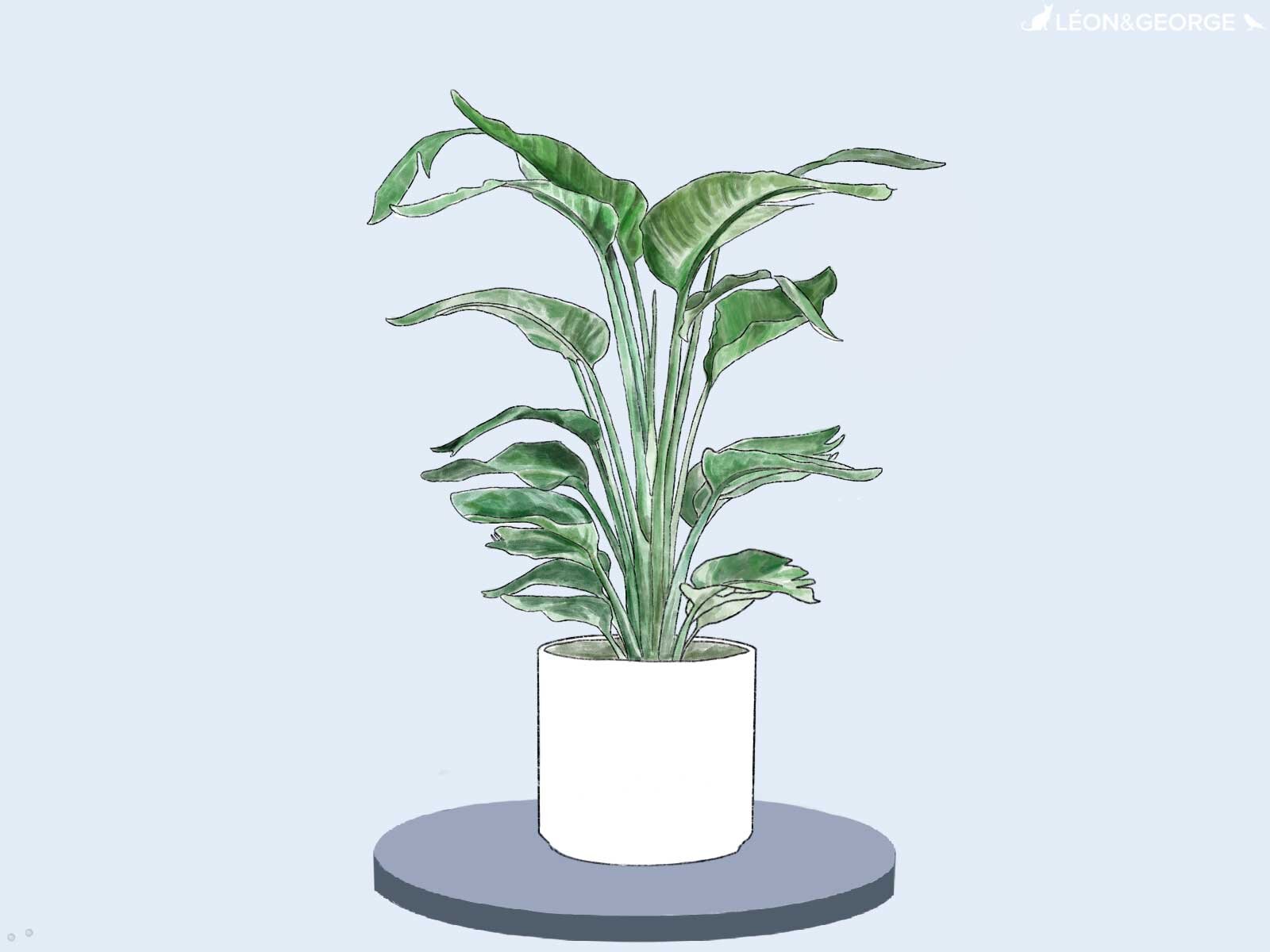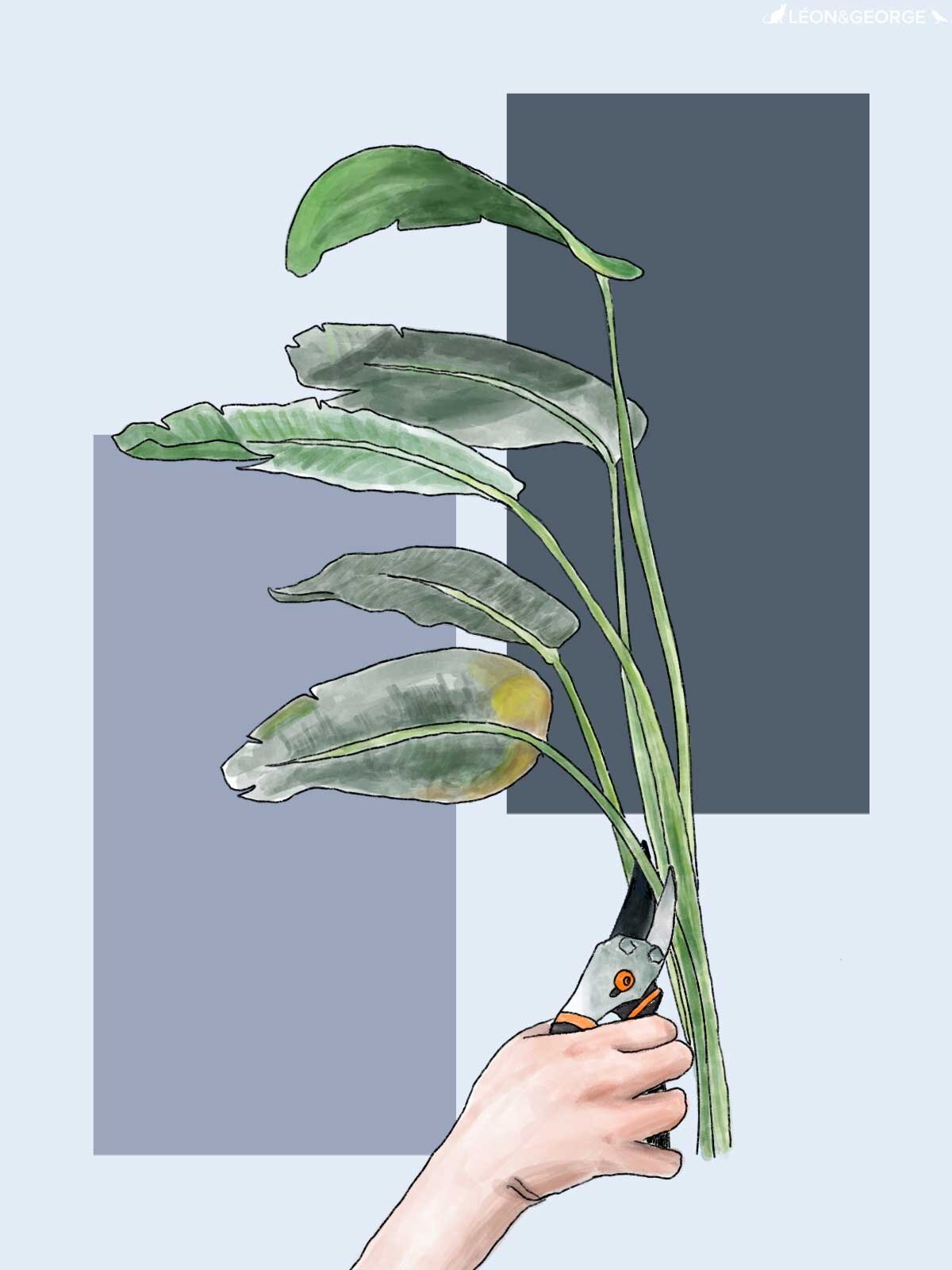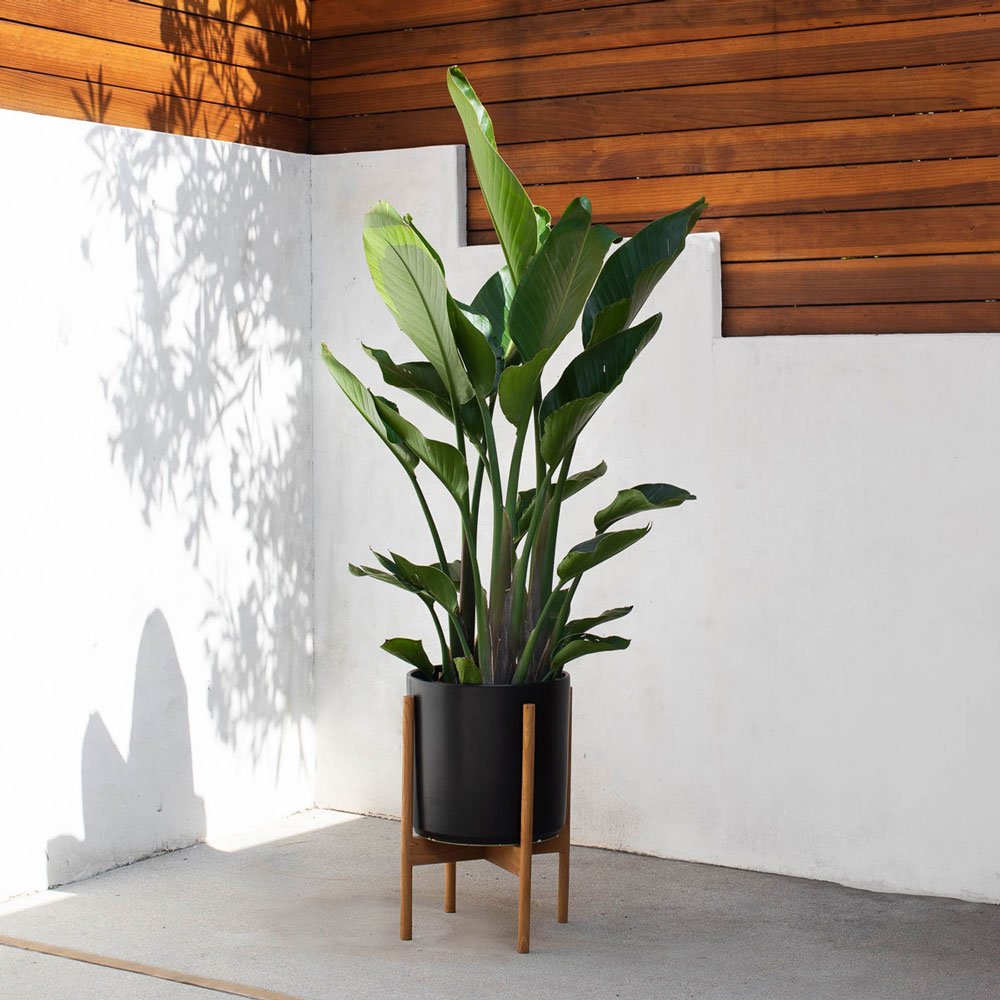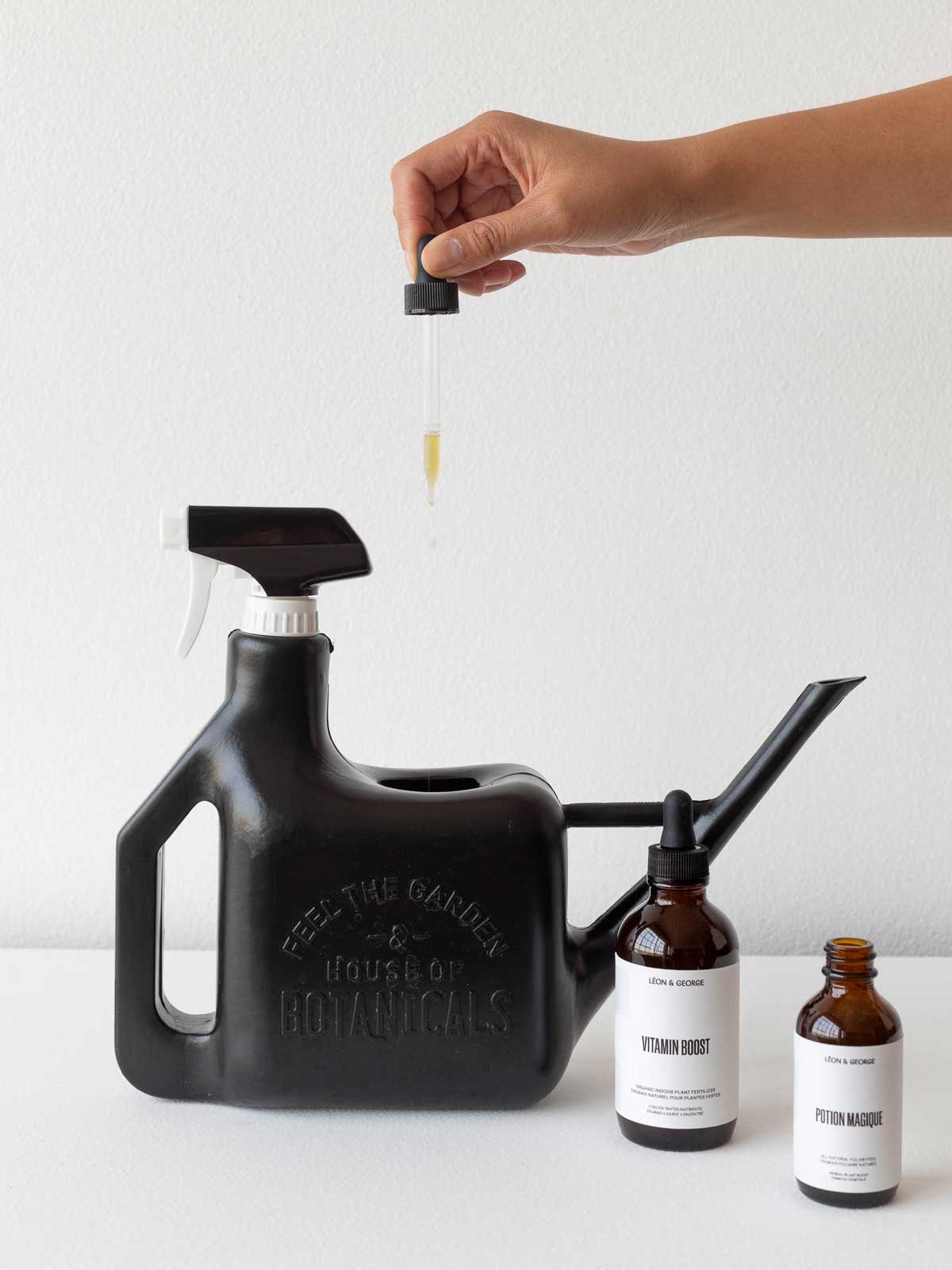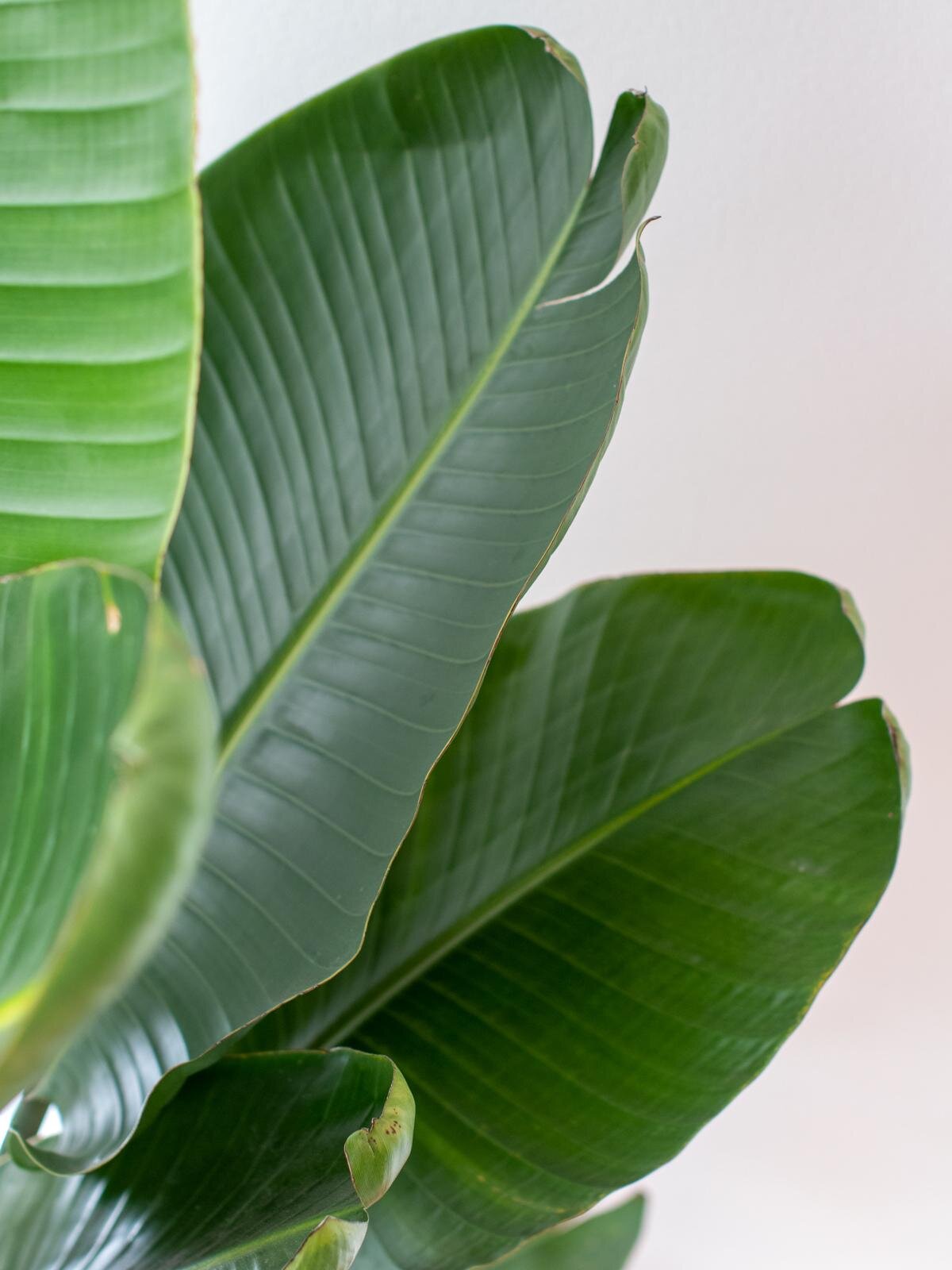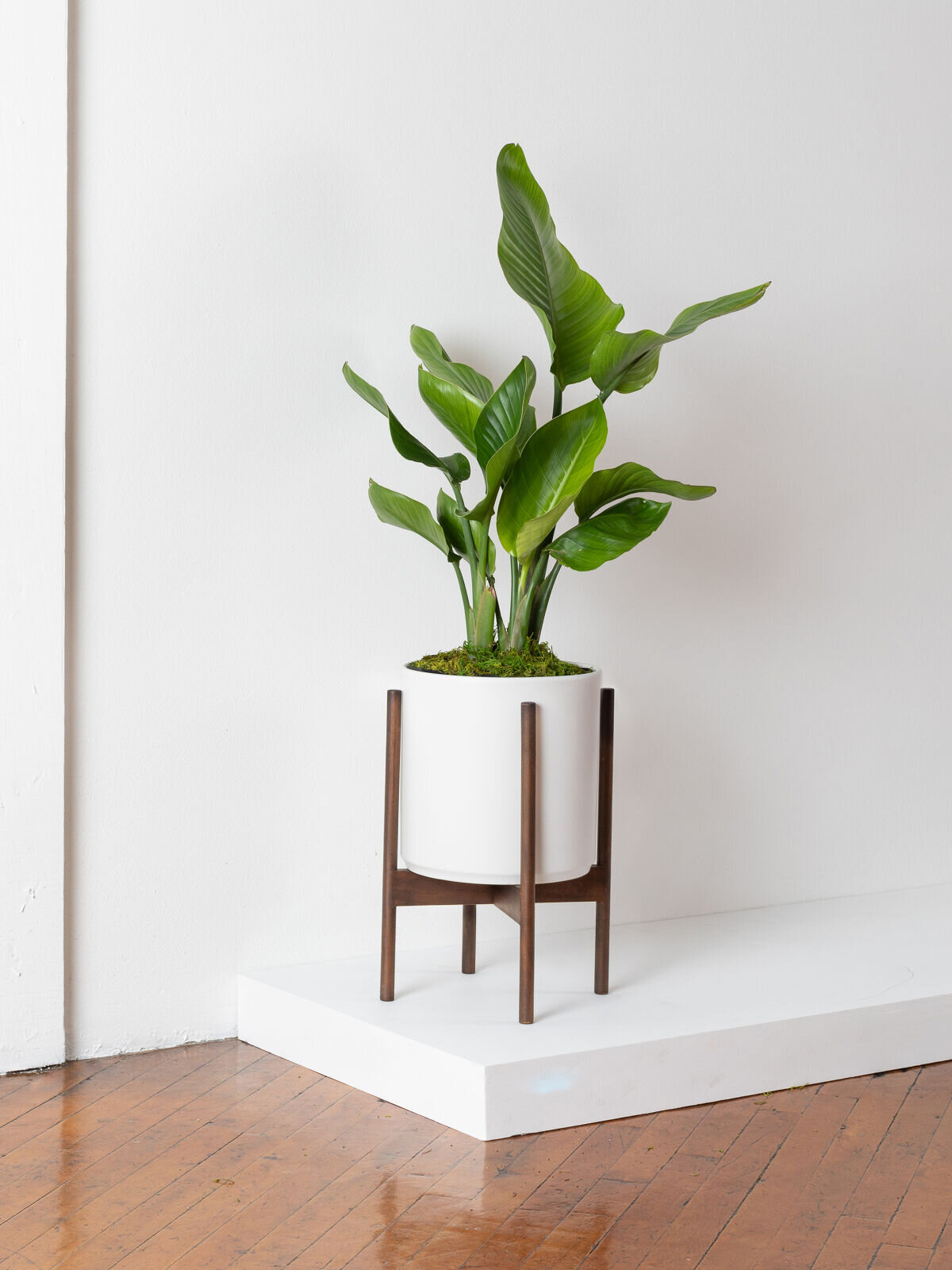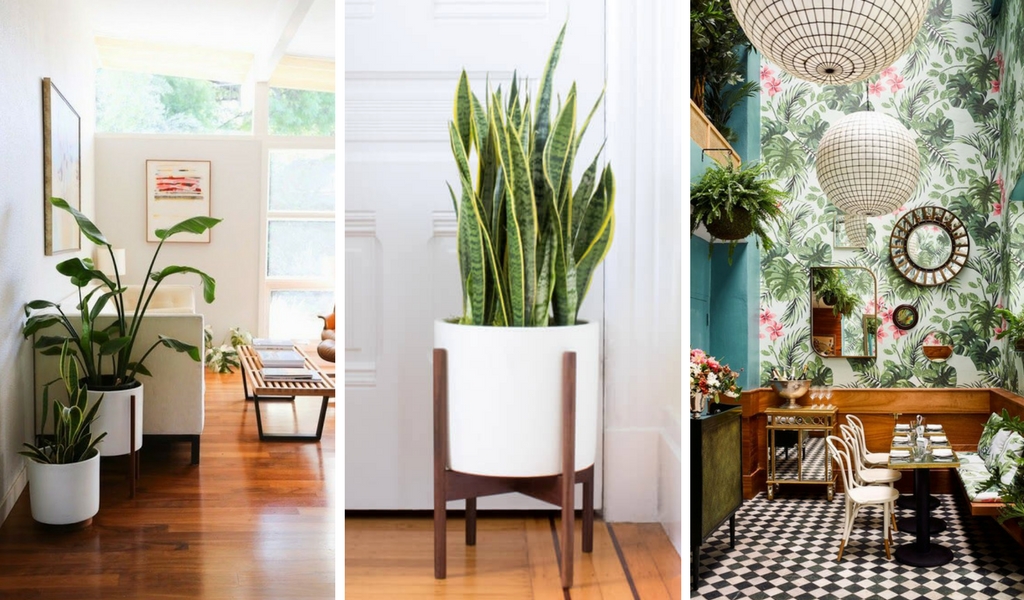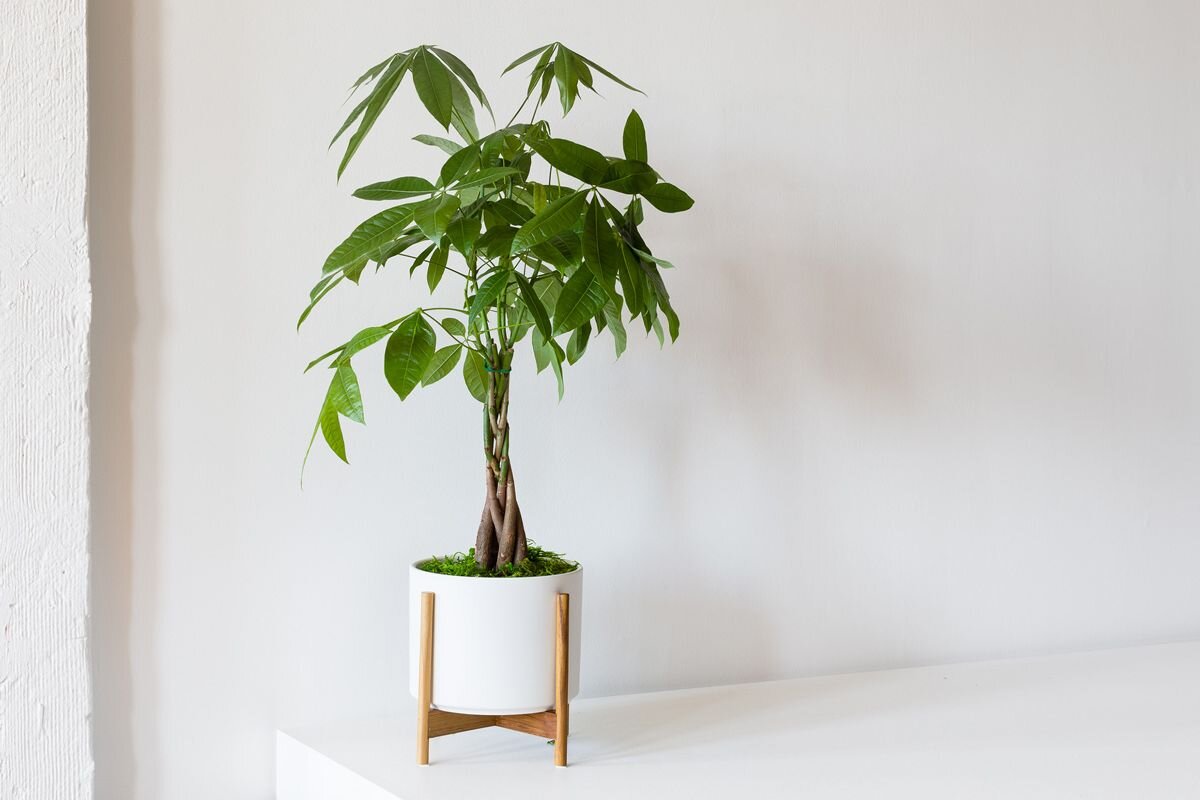With enormous glossy leaves and lush jungle vibes, the Bird of Paradise (strelitzia nicolai) is a true head-turner when brought indoors. Named after its colorful flower which resembles a bird in flight, this stylish yet hardy plant is perfect for plant novices and experts alike. Read on for simple tips on how to care for your plant and enjoy years and years of growth.
What type of light does the Bird of Paradise need?
This plant prefers bright indirect light, though unlike most indoor plants, it can also handle fair amounts of direct sunlight. Beware, though, as prolonged periods of harsh direct sun (think summer afternoon sun) will burn the leaves unless the plant is slowly acclimated to such conditions.
How to water the Bird of Paradise
Water thoroughly when topsoil is dry, usually once a week. Avoid overwatering, and note that your watering schedule may be less frequent during winter months. To increase humidity, mist regularly or use a humidifier.
How fast does the Bird of Paradise grow?
In prime conditions, this plant is a fast grower and can grow up to 10 feet tall indoors! As these are such fast growers, fertilize once every two weeks in spring and summer, or foliar feed year round.
Shop the Bird of Paradise
Large, glossy leaves and a laidback attitude make this lush plant perfect for brown thumbs and green thumbs alike.
Common problems with Birds of Paradise
Leaves splitting
A lot of people worry that the splits in the leaves of the Bird of Paradise are a sign of something wrong, but the truth is that split leaves in this plant are completely normal. As part of nature's design, the splits allow wind to pass through the leaves without bending, breaking, or uprooting the top heavy plant. While splitting may be reduced by keeping the plant indoors, it is still common and completely normal for this to occur.
Brown edges - underwatering
If you see crispy, brown edges, it could be that it’s underwatered or the environment is too dry. This plant likes a lot of humidity and are generally pretty thirsty plants — do not place this plant near air vents or heaters. Make sure you are watering your plant regularly, and also add misting to your routine to boost humidity levels for the plant’s foliage (you can mist every day, several times a day, or just a couple times a week!).
Yellow leaves - overwatering
If you see yellowing wilted leaves, it could be that your plant is overwatered. Check the roots to make sure there is no root rot. If the roots are damaged, you will need to repot your plant (see below). If the roots are fine, simply let the plant dry out before watering again.
Curling leaves
If the leaves on your plant are curling inward, the cause is most likely also underwatering. To let your plant replenish its moisture, give it a good shower. Remove the plant from its decorative pot and place in a shower, bathtub, or outside. Give it a thorough watering, allowing it to drain all the excess out before putting back in the pot. Depending on how dry the plant is, you may also allow it to sit in water for an hour or two.
How to maintain a beautiful and healthy Bird of Paradise
Take care of your Bird of Paradise and it will take care of you! Below are simple tips to continue caring for your plant over time.
Pruning your Bird of Paradise
This plant does not mind an occasional haircut. With clean shears, cut off older or less attractive stalks at the base. Your plant will have more energy for new growth!
Cleaning
Big leaves means more dust. Take each leaf between two soft tissue cloths and wipe off the top to reveal a healthy shine (also helps the plant soak in more light!).
Trimming & reshaping
Have some leaves that are perfectly healthy but have a few cosmetic damages? Simply trim the leaf to imitate its natural shape. You also may notice your Bird of Paradise’s leaves occasionally split. This is completely natural and not much you can do about it. Obviously, the more this plant is touched, bumped into, moved, etc, the more the leaves will split.
How to repot a Bird of Paradise
Houseplants grow much slower than they would in the wild. Depending on the size of your plant and the density of the roots, this is nice to do every 2-3 years to provide fresh nutrients and encourage new growth. Keep in mind, though, that most plants like to have their roots tightly compacted.
When to repot - if the roots start to become visible outside the soil, it is time to consider repotting your plant.
Pot sizing - if you want your plant to grow taller, find a nursery pot that’s 2” in diameter larger than the current pot. If you want your plant to stay the same height, you can reuse the same pot and simply change the soil.
Get your hands dirty - spread out newspaper on the floor, remove the plant from the pot and shake off as much of the old soil as possible so that you have clean roots. Place the plant in the center of the pot, add new soil and pat down firmly. Water the soil thoroughly and place the plant in an area with bright indirect light. Your plant will take 2-4 weeks to settle from the shock and adjust to its new home.
How to propagate a Bird of Paradise
Propagating a Bird of Paradise is best done through division. That said, because Birds of Paradise like to have their roots tightly packed, it is best to only propagate from a plant that has a lot to spare or has outgrown its pot.
Spread a newspaper on the floor and remove the plant from its pot - You should see a giant mass of roots!
Determine which pieces of the plant you will divide - Carefully begin to separate or untangle the roots. If you need to cut, use clean shears.
Repot in fresh soil - Once you have your divided pieces, repot in fresh soil, pack down tightly, and water thoroughly. You’re done!
Illustrations by our talented plant stylist, Kailie Barnes.
Bird of Paradise
With large, elegant and shining leaves, the Bird of Paradise is a popular indoor plant for creating an instant jungle atmosphere.
